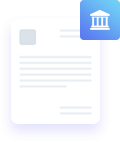Best Research Paper Sample 1-(The Effects of Immediate Feedback Devices in High School Chemistry Classes)
High School-Research Paper Sample
CHAPTER I: INTRODUCTION
On January 8, 2002, President George W. Bush signed the No Child Left Behind Act of 2001 (NCLB), a reauthorization of The Elementary and Secondary Education Act, into law (No Child Left Behind, retrieved April 23, 2007). NCLB “established requirements for the standards and assessment systems of states†(Standards, Assessment, and Accountability, 2007). This requirement led to the development of the California State Standards as assessed each year by the California Standards Test. Scores from these tests are used to determine accountability scores for schools in the state, which need to meet predetermined levels each year.
Due to this federal and state accountability, school districts and ultimately schools have been pressured into improving student education with the goal of increasing test scores. In the past Saugus High School (Saugus, California) has been able to meet its level of accountability required by the state of California (California Department of Education, 2006). However, as the sliding scale for meeting the standards increases, it has become more difficult to achieve an appropriate score from the state. In the most recent available year, Saugus High School achieved a base score of 790 out of 1,000 (California Department of Education, 2007). The score required in that year, however, was an 800.
In order to improve the scores of chemistry students at Saugus High School, it is important to find a way to motivate students to learn. If students feel motivated they are more likely to take an active role in their own learning, which in turn can lead to better knowledge acquisition. For example, students in my chemistry classes struggle with the mathematical portions of chemistry and can easily get discouraged. It is extremely important that I find a way to improve student motivation with the hope that achievement will also increase.
Purpose Statement
The purpose of this paper will be to examine the usage of immediate feedback devices in my high school chemistry classes. The specific research questions addressed in this paper will be the following:
1) What is the effect of using immediate feedback devices on student motivation?
2) What is the effect of using immediate feedback devices on student achievement? The paper will also present a potential way to utilize these feedback devices in high school chemistry classes.
Importance of the Study
The information will be of value to chemistry teachers working in a similar socio-economic school setting to that of Saugus High School in Saugus, California. Hopefully, the results will allow these teachers, as well as those at Saugus High School, to improve their teaching in such a way as to ultimately improve the state testing scores required by NCLB.
Another purpose is to allow science teachers, and especially High School chemistry teachers, to improve the motivation of their students.
Definition of Terms
- Immediate Feedback Device (IFD) – An interactive remote control device that allows students to provide responses to questions posed by the instructor in such a way that only the student and the instructor know. The student is receives immediate feedback reflecting the accuracy of their response. The specific devices used here will be the Classroom Performance System (CPS) from Pearson Education, Inc. (Classroom Performance System (CPS) – Student Response Pads, 2007).
CHAPTER II: LITERATURE REVIEW
In an attempt to answer the research questions in this High School paper I am going to focus on motivation, feedback, and survey design. The first two, motivation and feedback, are an integral part of my project as they relate directly to the wording of my two research questions. The third is an important tool in my methodology. Without an appropriate survey design any results that I may obtain could be flawed.
Motivation
One of the many aspects that can help to promote better achievement by students in the classroom is motivation (Slavin, 2003). Robert Slavin (2003) defined motivation as “what gets you going, keeps you going, and determines where you want to go†(Slavin, 2003, p.329). Brookhart, Walsh, and Zientrarski (2006) defined motivation as a “disposition towards something†(p.156). Many researchers agree that motivation is a key component in reaching a high level of student achievement (Brookhart et al., 2006; Palmer, 2005; Mazer, Murphy, & Simonds, 2007).
Providing a distinct set of goals can also help motivate students. Martin (2006) suggested that if students have predetermined goals they will strive for personal bests with a higher level of motivation. In a world where students see personal bests “lauded by elite athletes [that] they hold in high esteem†(p.820), Martin argued that if High School students set meaningful goals that are attainable students will progressively achieve higher results.
According to Mazer et al. (2007), the instructor can play a large role in determining the motivation level of the students in the class. They studied the effects of teacher self-disclosure on student motivation using the Facebook web-based software as the medium for disclosure. They found that students were more motivated when their instructor shared some personal information about themselves. However, there were some drawbacks to this self-disclosure when they found that too much self-disclosure did not elicit the same motivation (Mazer et al., 2007)
Feedback
Feedback is an important part of the education process (Brawdy & Byra, 1994; Clariana & Koul, 2006; Slavin, 2003). Students need to be given a chance to see their progress prior to assessment in order to better their achievement. Clariana and Koul (2006) stated that the use of a multiple feedback method was preferable to both a delayed feedback method as well as single-try knowledge of correct response (KCR) method in the promotion of fuzzy-trace memory. Students exposed to a multiple feedback method scored much better when assessed using questions that only paraphrased subject material that the students studied. They also showed, however, that delayed feedback as well as KCR were better at promoting verbatim-trace memory.
Although Clariana and Koul (2006) showed that in certain instances delayed feedback could be useful, Kulik and Kulik (1988) emphasized the importance of immediate feedback (as cited in Slavin, 2003). If students are not able to see the connection between the completed task and the feedback offered to them, then the “informational and motivational value of the feedback will be diminished†(Slavin, 2003, p.353). The students might continue to make the same errors on related tasks in the future (Slavin, 2003).
It is also important for students to receive frequent feedback. Slavin (2003) states that “frequent rewards are more effective incentives than are large, infrequent ones†(p.353-354). He suggested that if students are assessed more frequently and with shorter assessments, they will perform better and be better able to see the connection to the feedback being offered. He also suggested that frequent feedback can lead to a better metacognition.
Survey Design
Surveys are one of many ways to effectively determine the viewpoints of students on various topics (Felstad et al., 2005; Porter, 2006; Timmerman, 2002; Wang & McNamara, 1997). There are many ways to administer surveys in the education field. It One possibility is to use paper surveys administered in person and another is to administer online web-based surveys (Timmerman, 2002). Whether the traditional paper survey or the more modern survey is used, there are a few important factors to take into account. Timmerman (2002) suggested that it is important to address coverage error, sampling error, and non-response error when designing surveys. Coverage error refers to the inability of the survey to include the entire population, while the sampling error refers to not surveying a sample that is representative of the population. Non-response error refers to the error caused by participants not answering all of the questions present in the survey. She showed that it is possible to use the physical design of a web-based survey to account for some of these survey errors.
CHAPTER III: METHODOLOGY
Participants
This study will be performed using four classes of high school students enrolled in a general chemistry class at Saugus High School. The students enrolled in these classes will range from the tenth grade to the twelfth grade. The majority of the students will be sophomores with a decreasing percentage being juniors and seniors respectively.
The makeup of these classes should be comparable to this year’s statistics where 43.4 percent of the students are male, while 56.6 percent of the students are female. As a prerequisite for enrollment in the general chemistry class at Saugus, all of the students will have completed first-year algebra.
Saugus High School is located in Santa Clarita, California at the northern edge of Los Angeles County and pri marily serves residents of the Saugus High School and Valencia communities. Santa Clarita is the 24th largest city in California and is the fourth largest in Los Angeles County. Currently, the population of Santa Clarita is growing faster than any other city in Los Angeles County (City of Santa Clarita – Demographics, 2003). Saugus High School has a current enrollment of 2,593 students as is 67 percent Caucasian, 20.9 percent Hispanic, 5.1 percent Asian/Pacific Islander, 2.4 percent African America, and 0.02 percent Filipino. 71 percent of the parents of Saugus High Schoolstudents have completed at least some college, while 11 percent hold post-graduate degrees (Spansel, Fricke, & Hamburger, 2007).
Materials
The Immediate Feedback Devices (IFD) being used in this particular study consist of a classroom set of Classroom Performance System (CPS) remotes produced by Pearson Education, Inc. The devices are remote controls that use infrared or radio signals to communicate with a receiver attached to the instructor’s computer. The instructor displays multiple-choice questions using a portable projector or some other display method. The instructor has the choice of including pictures or graphics in the display of the question. The students use the remote control to key in their answer without any of their classmates knowing what their answer is. Only the student in question and the teacher will know whether or not the student’s answer is correct.
In order to determine the students’ opinion of the IFDs and how they are used a pre-survey and a post-survey will be administered. The survey will consist of approximately ten to fifteen questions using a likert scale. The questions on the survey will ask the students to rate their confidence in their ability to do well on the assessments before using the IFDs and then a second time after using them.
Another way of collecting data on student motivation will be through the use of field notes taken during the period the IFDs are used. Student interviews will also be used to help elaborate on the data collected in the surveys.
Procedure
In order to determine the effect of the IFDs on achievement, the average of the students’ scores on tests will be compared with the scores of students from the prior two years on the same tests. Quiz scores will also be compared in a similar fashion. The instructor for the chemistry classes for all three years will be the same.
Another method for determining achievement will be the percentage of students completing homework assignments. In the past, the author noted that one of the main reasons students did not complete their homework was due to the fact that they were not able to fully comprehend the subject matter. If students during the study turn in their homework significantly more than in previous years, then the claim can be made that their achievement has increased.
The study period will consist of approximately one month, during which time there will be roughly three different chapter tests as well as two quizzes. The IFD’s will be used twice per chapter, once in the middle in order to review the first portion of the chapter as well as once at the end of the chapter as a review for the exam. The field notes will be taken the day the IFDs are used as well as the day the quiz and test scores are returned. The surveys will be given at the beginning of the one-month study period, once in the middle, as well as at the end of the study period. The interviews will take place after the first and last survey. The High School students for the interviews will be determined by randomly selecting surveys. A minimum of three students will be interviewed each time.
References
Brawdy, P. & Byra, M. (1994, April). A Comparison of Two Supervisory Models in Preservice Teaching Practicum. Paper present at the Annual Meeting of the American Educational Research Association, New Orleans, LA. (ERIC Document Reproduction Services No. ED 372065).
Brookhart, S. M., Walsh, J. M., & Zientarski, W. A. (2006). The Dynamics of Motivation and Effort for Classroom Assessments in Middle School Science and Social Studies. Applied Measurement in Education. 19(2), 151-184.
California Department of Education (2006). 2005-06 Accountability Progress Reporting (APR) for Saugus High School. Retrieved April 30, 2007 from http://api.cde.ca.gov/APIBase2006/2005BaseSch.aspx?allcds=19651361931740.
California Department of Education (2007). 2006-07 Accountability Progress Report (APR) for Saugus High School. Retrieved April 30, 2007 from http://api.cde.ca.gov/AcntRpt2007/2006BaseSch.aspx?allcds=19651361931740.
City of Santa Clarita, CA – Demographics (2003). Retrieved April 30, 2007, from http://www.santa-clarita.com/cityhall/cd/ed/community_profile/demographics.asp.
Clariana, R. B., & Koul, R. (2006). The effects of different forms of feedback on fuzzy and verbatim memory of science principles. British Journal of Educational Psychology. 76, 259-270.
Classroom Performance System (CPS) – Student Response Pads. (2007). Retrieved April 24, 2007, from http://formative.pearsonassessments.com/cps/index.htm.
Felstead, A., Fuller, A., Unwin, L., Ashton, D., Butler, P., & Lee, T. (2005). Surveying the scene: learning metaphors, survey design and the workplace context. Journal of Education and Work. 18(4), 359-383.
Martin, A. J. (2006). Personal bets (PBs): A proposed multidimensional model and empirical analysis. British Journal of Educational Psychology. 76, 803-825.
Mazer, J. P., Richard, E. M., & Simonds, C. J. (2007). I’ll See You On “Facebookâ€: The Effects of Computer-Mediated Teacher Self-Disclosure on Student Motivation, Affective Learning, and Classroom Climate. Communication Education. 56(1), 1-17.
No Child Left Behind. (n.d.). Retrieved April 23, 2007, from http://www.ed.gov/nclb/landing.jhtml.
No Child Left Behind Act of 2001, H.R. 1, 107th Cong., 2nd Sess. (2002).
International Journal of Science Education. 27(15), 1853-1881).
Porter, A. (2006). Assess Your Program with a Survey. Teaching Music. 14(3), 46-48.
Slavin, R.E. (2003). Educational Psychology: Theory and Practice (Seventh ed).
Boston: Pearson Education, Inc.
Spansel, M., Fricke, M., & Hamburger, D. (2007). Saugus High School WASC Focus on Learning Self-Study Report: Mid-term Review. Unpublished manuscript.
Standards, Assessment, and Accountability. (2007). Retrieved April 22, 2007, from http://www.ed.gov/admins/lead/account/saa.html#peerreview.
Timmerman, A. (2002). Introduction the Application of Web-Based Surveys. Raleigh, NC: North Carolina Department of Public Instruction. (ERIC Document Reproduction Services No. ED 474097).
Wang, L. & McNamara, J. F. (1997, March). An Evaluation of the Sample Designs in Educational Survey Research. Paper Presented at the Annual Meeting of the American Education Research Association, Chicago, IL. (ERIC Document Reproduction Services No. ED 409318).















